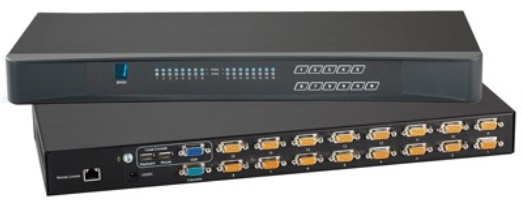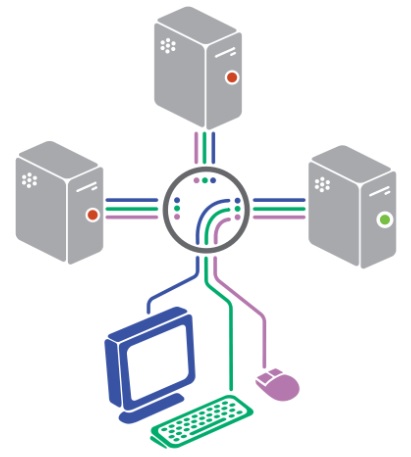KVM Switch - Network Power Management Interface of Servers
Keyboard, video, and mouse (KVM) is an industrial instrument that allows users to concurrently control multiple computers from keyboards, video monitors, and mice.
When the time of the computer industries rose in the 80’s, companies and data centers were faced with problems that dealt mainly with space limitation of hundreds of computers. They had to find an efficient way to manage space. To solve these problems, the demand for a device that allows people to access multiple central processing units with one source was on the rise. The KVM switch was invented to combat this problem that was taking up valuable space, time, and money.
Benefits of Using KVM Switch
Supervising hundreds and even thousands of computers is a needless hassle that brings inconvenience to the industry. Using a KVM switch transforms the workforce in its productive nature to conserve time, space, and money. The switch allows users to connect from one system to another computer while accessing data in real-time. The keyboard, mouse, and video monitor are all connected to the KVM switch. This allows users to use a single set of keyboard, video monitor, and mouse instead of supplying a set for each individual computer that ultimately takes up a whole lot of space and money. The switch is ideal, and convenient that meets the needs of a business that needs to manage and access numerous amounts of servers and CPUs productively. As an entirety, because there are fewer keyboards, monitors, and mouse consoles, less power would be utilized, thus lowering your electrical bills dramatically. Furthermore, using the switch can decrease the number of server racks and server cabinets and saving a lot of ground space.
KVM switches are indeed excellent for data processing centers but it’s far more flexible in its tasks. These switches are also ideal in hospitals that require doctors to conveniently monitor a patient’s status or sharing information to different locations.
Understanding the Types of KVM Switches

USB
This type of switch manages the connections of keyboard and mouse through USB cables. It features the capability to share wireless keyboard and mouse connectivity and audio as well.
HDMI
An HDMI KVM switch offers high resolution and is used for connecting monitors that support HDMI. HDMI KVM switches are great for professional presentations, home theatres, and areas that would require HD display connectivity. It has the ability to switch between two or more computers with a single KVM and supports 480i, 480p, 720p, 1080i and 1080p video modes
DVI
The Digital Visual Interface (DVI) is an improvement from VGA that offers connectivity in higher resolution and graphics and supports different system arrangements.
Display Port
The switch supports a display port which is generally used as internal connection replacing DVI and VGA. Supports multiple displays and accessing many devices.
Multi-Display
Displays in VGA, DVI, HDMI, and Display port, allowing access of multiple programs and productively sharing data
Rack Consoles
Going from rack to rack is a hassle. The switch allows users to operate at the server cabinet. Necessary KVM support to save rack space.
KVM over IP
Switches used for connectivity over internet and LAN use, allowing users to control all CPUs and servers.
Multi-User
“A multi-user switch will allow simultaneous access to the switch by more than one user from multiple locations.”
Companies that thrive in a busy industrial environment require the many advantages of the KVM switch. This switch brings improved connectivity between servers, increases efficiency, management, saves space and time, and improves productivity for demanding applications.





